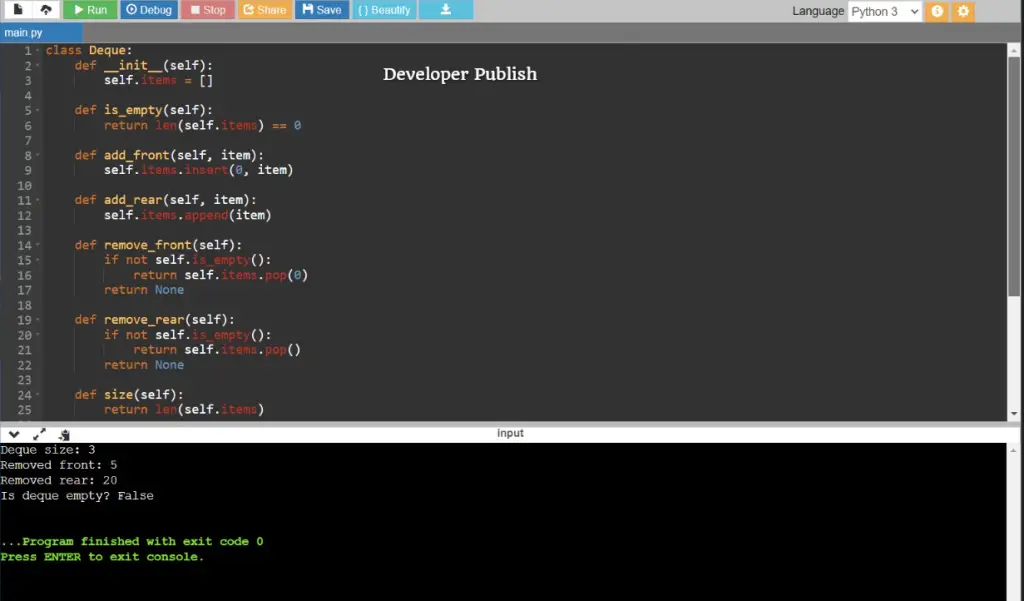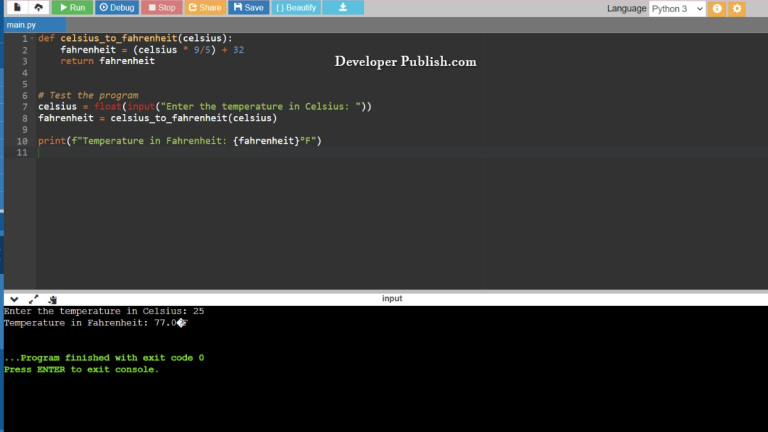This Python program implements a deque (double-ended queue) using a list. A deque allows elements to be added or removed from both ends efficiently. The Deque class defines methods for common deque operations:
A double-ended queue, or deque, is a data structure that allows insertion and removal of elements from both ends with constant time complexity. It can be thought of as a hybrid of a stack and a queue, providing versatile functionality for various use cases.
Problem Statement
Implement a deque data structure in Python, allowing operations such as insertion and removal of elements from both ends efficiently.
Python Program to Implement Dequeue
class Deque:
def __init__(self):
self.items = []
def is_empty(self):
return len(self.items) == 0
def add_front(self, item):
self.items.insert(0, item)
def add_rear(self, item):
self.items.append(item)
def remove_front(self):
if not self.is_empty():
return self.items.pop(0)
return None
def remove_rear(self):
if not self.is_empty():
return self.items.pop()
return None
def size(self):
return len(self.items)
# Example usage
deque = Deque()
deque.add_front(10)
deque.add_rear(20)
deque.add_front(5)
print("Deque size:", deque.size())
print("Removed front:", deque.remove_front())
print("Removed rear:", deque.remove_rear())
print("Is deque empty?", deque.is_empty())
How it Works
The program defines a class Deque that encapsulates the deque data structure. It uses a Python list (self.items) to store elements. The methods add_front, add_rear, remove_front, remove_rear, size, and is_empty provide the core functionality of the deque.
add_front(item): Inserts an item at the front of the deque.add_rear(item): Inserts an item at the rear of the deque.remove_front(): Removes and returns an item from the front of the deque.remove_rear(): Removes and returns an item from the rear of the deque.size(): Returns the number of items in the deque.is_empty(): Returns whether the deque is empty or not.
Input/Output



